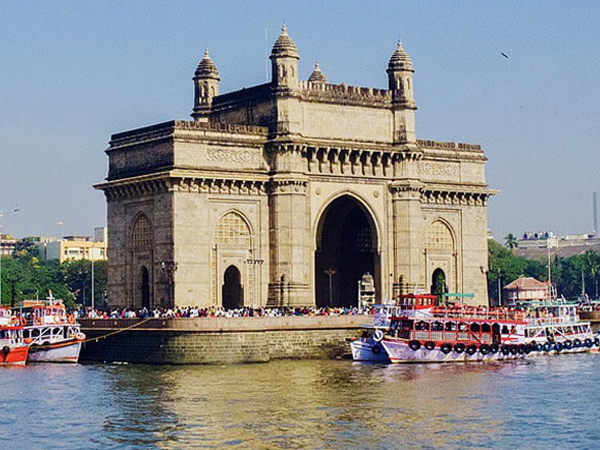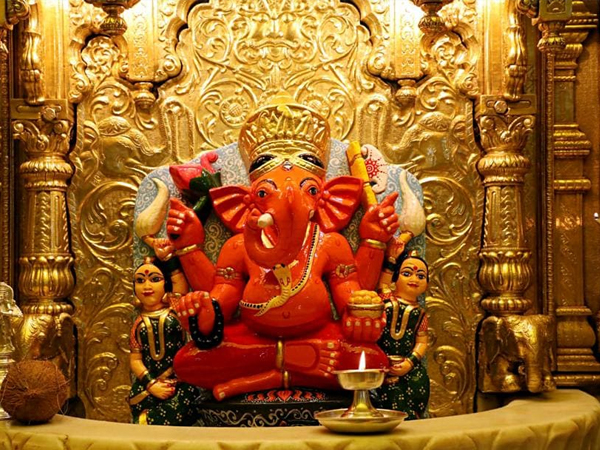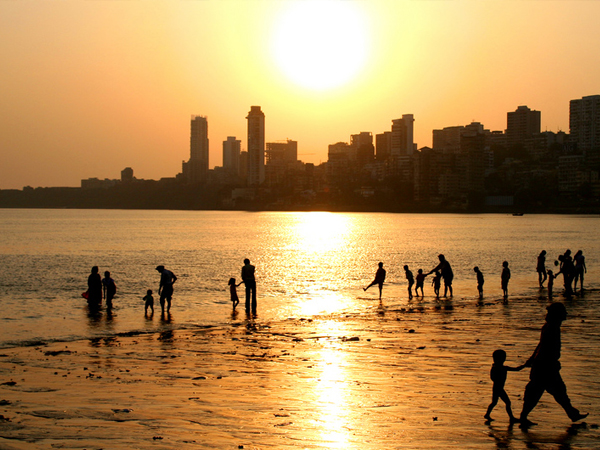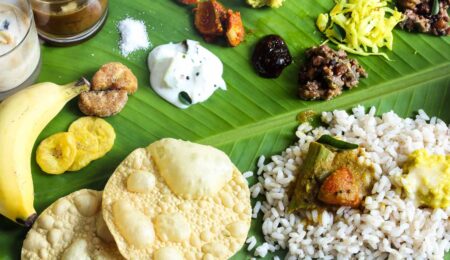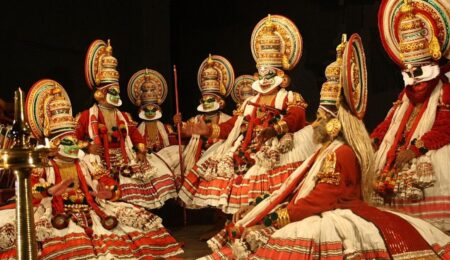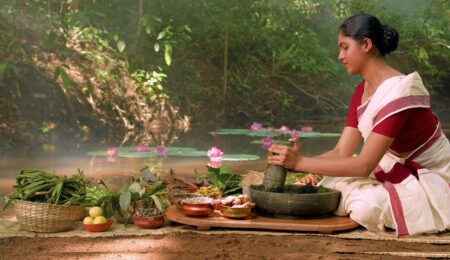Getting There
Trivandrum International Airport is a major gateway to South India. The two railheads are Trivandrum Central Railway Station and Kochuveli Railway Station. Overnight state and private buses are popular amongst pilgrims. Air-conditioned Volvo buses ply to Chennai, Madurai, Bengaluru Kochi and Kozhikode.
Behold the stately form of a gigantic reclining Vishnu at the Padmanabhaswamy Temple at Thiruvananthapuram. The grand gopurams of the temple tower behind a sylvan montage of a temple tank and a red-roofed village in a fort. Kerala’s royal history remains entwined with this temple’s awesome grandeur.
Thiruvananthapuram is a busy, modern city, but at its heart stands the fort, a regal reminder of the former web Travancore kingdom. It’s crowning jewel is the sacred and majestic beauty of the Padmanabhaswamy Temple, one of the Sacred Divya Desams for Vaishnavites: The 18th-century King Marthanda and Varma dedicated his martial victories his riches to the lotus feet of Vishnu at this temple and the association is kept by his royal descendants even today”.
 Temple Deity – Anantha Padmanabhaswamy
Temple Deity – Anantha Padmanabhaswamy
The grand majesty of the 18ft-long Anantha Padmanabhaswamy is inspiring to behold. The largeness of the idol makes a darshan possible through three doors that are opened for a vision of his head, torso, and feet respectively. His recumbent form is on a bed of snake coils of Adisesha or Anantha whose five hoods shade Vishnu’s crown. The idol is made of a special wood with 12,000 saligramams holy stones) mottled into it. The deity incorporates the divinity of Shiva, Vishnu, and Brahma. Vishnu’s right-hand rests on a Shiva lingam. His other hand holds us. From his navel stands the stem of a lotus with Brahma seated in it earning him the name of Padmanabha. You can see his consorts, Sridevi (goddess of prosperity)and Bhudevi (goddess of the earth) along with sage Diwakar and an Utsava Moorthy of Vishnu in this section. Behind him is a vast mural of celestial beings. The annual doorway offers views of the Lord’s feet.
Temple History
The temple has been praised in poems set in the Sangam period (3BC-AD). Later Raja Marthanda Varma built the magnificent gopuram and hosted the first Alpasi festival in the temple. Additions including mandapams, a gopuram on the eastern entrance and other architectural embellishments followed. Rani Gouri Parvathy Bai, the Travancore queen, commissioned a large mural of Ananthasayana Vishnu. Sree Chithira Thirunal Varma (or Padmanabha Dasa), who took charge at the age of 24, was the first to allow people from all walks of life to enter the temple in the1930s. Later in 1991, Sree Uthradam Thirunal Marthanda Varma took charge and initiated the Lakshadeepam Festival which takes place every six years
Style & Architecture
The aesthetic mix of Dravidian and Kerala-style architecture dates back to the early 16th century. The gopuram is 100ft tall with seven tiers, carved with sculptures. Go down the fort area down a long path flanked by the tank, Padma Theertham (p137) and the Puthenmalika Palace. Past the main door is magnificently-carved pillared pathways that lead to the main shrine. The temple has 365 carved granite columns. Enter part of the main shrine, facing the Kulashekara Mantapam. Near the Chuttambalam (outer part of the sanctum) stand two large sculptures of Hanuman and Garuda. A narrow entrance leads to the area right in front of the three doors of the sanctum. The offerings are usually made to a seated Vishnu in the sanctum and not the main idol. Intricate murals adorn its walls. Shrines to Ganapathy and Narasimha are outside the sanctum.
Special Features
Kulasekara Mandapam or the pillared hall has 36 sculptures of Deepalakshmis and nature-inspired themes. The corners of these pillars make melodious sounds. It’s also known as Sapthaswara M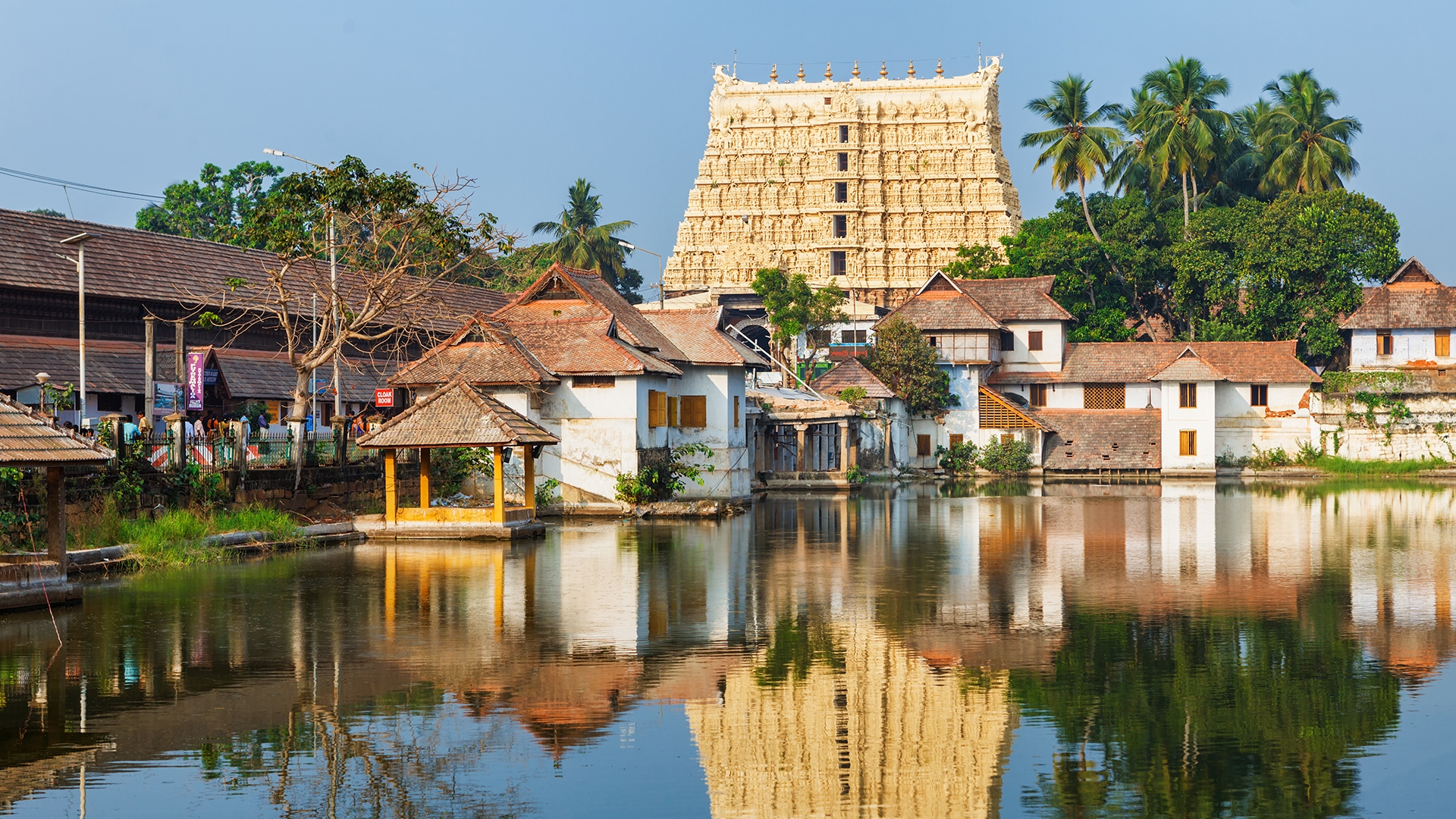 andapam (entry 710; 8.30-11 am, 4.40-7.30pm). Padma Theertham is the pretty temple tank that lies on the eastern gate of the temple, along the main entrance. This is one of the oldest reservoirs in the city. A Krishna shrine outside the main sanctum area is said to have been consecrated by the Vrishni sect who brought the idol from Gujarat.
andapam (entry 710; 8.30-11 am, 4.40-7.30pm). Padma Theertham is the pretty temple tank that lies on the eastern gate of the temple, along the main entrance. This is one of the oldest reservoirs in the city. A Krishna shrine outside the main sanctum area is said to have been consecrated by the Vrishni sect who brought the idol from Gujarat.
Temple Festivals
Alpasi and Panguni are bi-annual festivals that start with the royal flag hoisting and go on for ten days. The idols of Vishnu on a gold mount, Krishna and Narasimhaswamy on Silver mounts are decorated in fine jewelry and silks. On the closing days of the Arattu Festival, the idols are taken in procession to the nearby Shankumugham Beach for a dip in the Arabian Sea. Expect dances, music and colorful processions during this festival period. The members of the Travancore royal family lead the pageantry and festivities. For dates, timings and details check www.sreepadmanabhaswamytemple.org.
Temple Legend
Once, Sage Diwakar did intense penance to propitiate Vishnu. As a reward, he wanted a child who would live with him always. Vishnu agreed but laid the condition that Diwakar should not ever scold the child. One day the child popped a saligramam (divine pebble) into his mouth. The rishi scolded the child for desecrating a sacred stone. The child left, saying that if he wanted to find him Diwakar would have to go to Anantha forest. On realizing that the child was Vishnu himself, Diwakar set out in search of him and came upon a tree that Crashed in front of him and transformed into Ananthasayana Vishnu. 18 miles long. Unable to see the entire figure. the sage requested the Lord to take a form DEger than three times his staff. Paying heed Vishnu shrunk his size and lay in EClining posture 18ft in size on the very spot the temple now stands.
Swathi Thirunal
Maharaja Swathi Thirunal Rama Varma of Travancore (1829-1846) was a composer with more than 400 songs in Carnatic and Hindustani music to his credit. His songs are marked by a signature invocation to Lord Padmanabhaswamy, his divine muse. The annual (6-12 Jan) music festival. Swathi Sangeethotsavam is held in his honor at the beautiful Kuthiramalika. south-east of the temple, which also houses the Temple Museum exhibiting roya memorabilia
.


